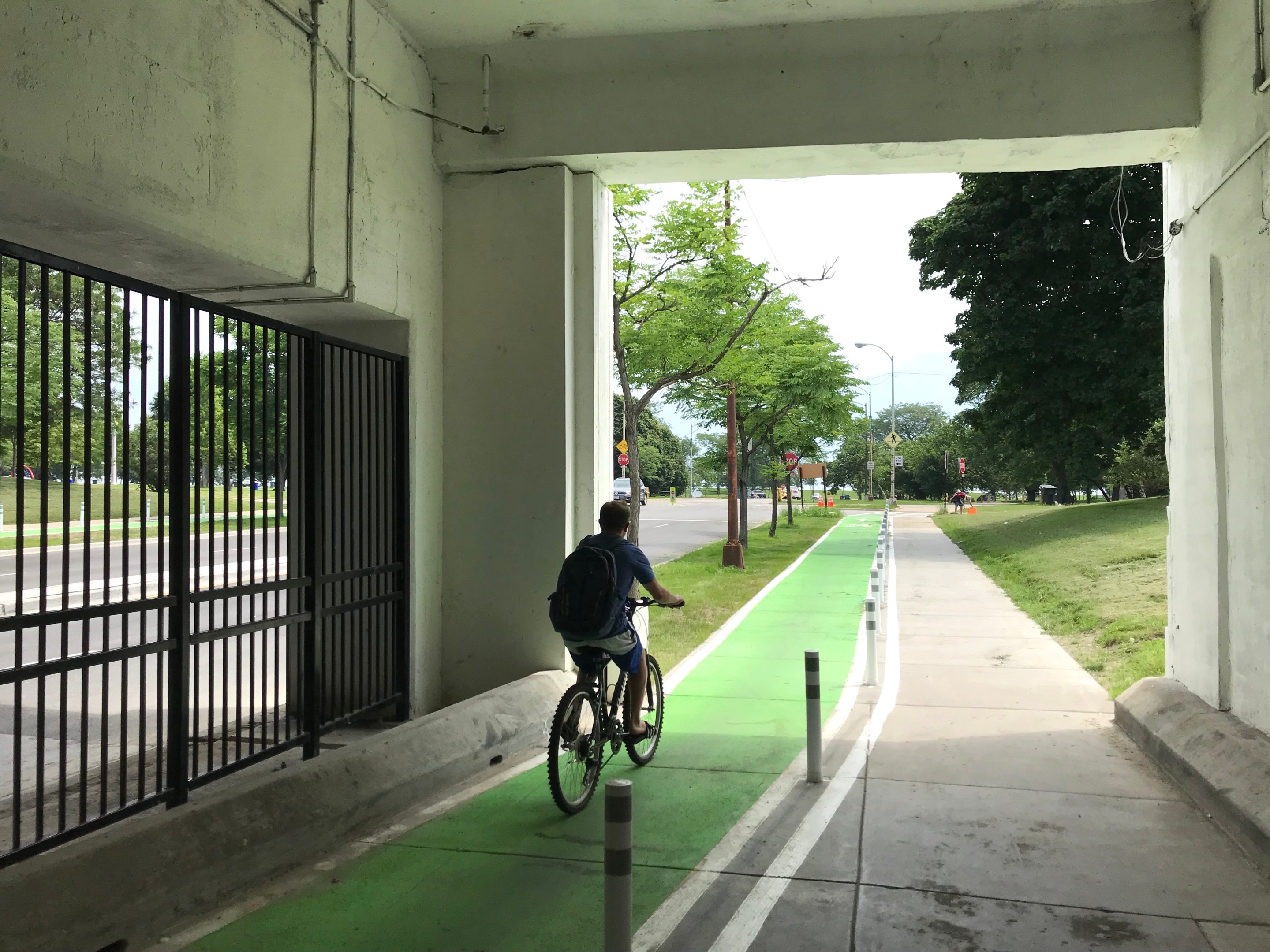Last December, after the Seattle Department of Transportation installed a large number of bike racks in a viaduct, near no apparent destination, a department spokeswoman eventually acknowledged that the racks were part of a “strategy for lessening the hazards of unsheltered living,” i.e. they were put in to prevent homeless people from camping there.
It appears that the Chicago Department of Transportation took a similar approach of employing bike infrastructure as defensive architecture when it built sidewalk bike lanes inside the Lawrence and Wilson viaducts of Lake Shore Drive in the Uptown neighborhood as part of the recent renovation of the underpasses. For years there were homeless encampments on the sidewalks of both viaducts, which made it easy for homeless advocacy groups and others to offer donations and social services to the residents. But the tent cities were also a headache for local alderman James Cappleman, since some of his constituents disliked having to walk past them on their way to the lakefront.
Unlike SDOT, CDOT hasn’t stated that the chief motive for installing the infrastructure was to prevent homeless people from returning after the underpass reconstruction, and so far no smoking gun has been found to prove that was the case. However, former residents of the tent city, represented by the Chicago Coalition for the Homeless Law Project, sued the city over the issue, arguing that the installation of the bike lanes was discriminatory against the homeless because it was done with the sole purpose of displacing them. The lawsuit also asserted that the design of the bikeways is dangerous.
The initial purpose of the lawsuit was as a negotiating tool to get the city to the table to get housing assistance for the former tent city residents, according to the coalition’s policy director Julie Dworkin. The city filed a motion to dismiss the case, which the judge recently granted in part, arguing that the bike lanes aren’t discriminatory because they prevent all people, not just the homeless, from camping in the viaducts. However, the judge also gave the coalition a chance to amend their complaint, and current the goal of the suit is to have the bike lanes declared illegal as a violation of Illinois’ Bill of Rights for the Homeless Act, Dworkin said. The group hopes to force the city to remove the lanes, to send a message that designing public spaces specifically to exclude homeless people is unlawful discrimination.
One big difference between the Seattle scenario and the Chicago situation is that while the bike racks had no other function than to prevent camping, arguably the bike lanes serve a purpose by making it safer and easier to bike between Uptown and the Lakefront Trail and Montrose Harbor. Some cyclists are using the new bike lanes, although others are opting to ride in the street instead.
Notably, there are four travel lanes under both viaducts, while Lawrence and Wilson have only two travel lanes in all other locations, so if CDOT had instead converted travel lanes to protected bike lanes, there would have been no impact on traffic congestion. On the other hand there’s plenty of room on the wide sidewalks in the viaducts for both cyclists and pedestrians, and the two modes are separated by tightly spaced plastic bollards. (It would be great if CDOT used the same tight pole spacing for on-street protected bike lanes to help keep drivers out of them.)

Before the sidewalk lanes were built, Streetsblog’s Steven Vance argued that they would be unsafe and inconvenient to use due to the need for cyclists to transfer from on-street bike lanes to the sidewalk and back again after crossing LSD access ramps. After test-riding them, I believe that they actually function reasonably well, as they shepherd cyclists directly to the Lakefront Trail and paths to the beach. The transitions between the street and sidewalk aren’t particularly awkward, and the ramp crossings don’t seem especially hazardous, although it is a good idea to look over your left shoulder for right-turning cars before crossing the on-ramps.
So the Lawrence and Wilson sidewalk bike lanes don't seem to be useless white elephants, like the Seattle bike racks, or unsafe deathtraps. Still, if the city’s main motivation for installing them was to thwart human beings from seeking shelter from the elements, as appears to be the case, that’s highly troubling.





